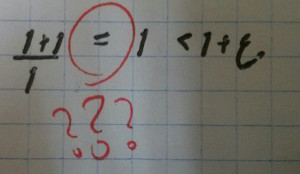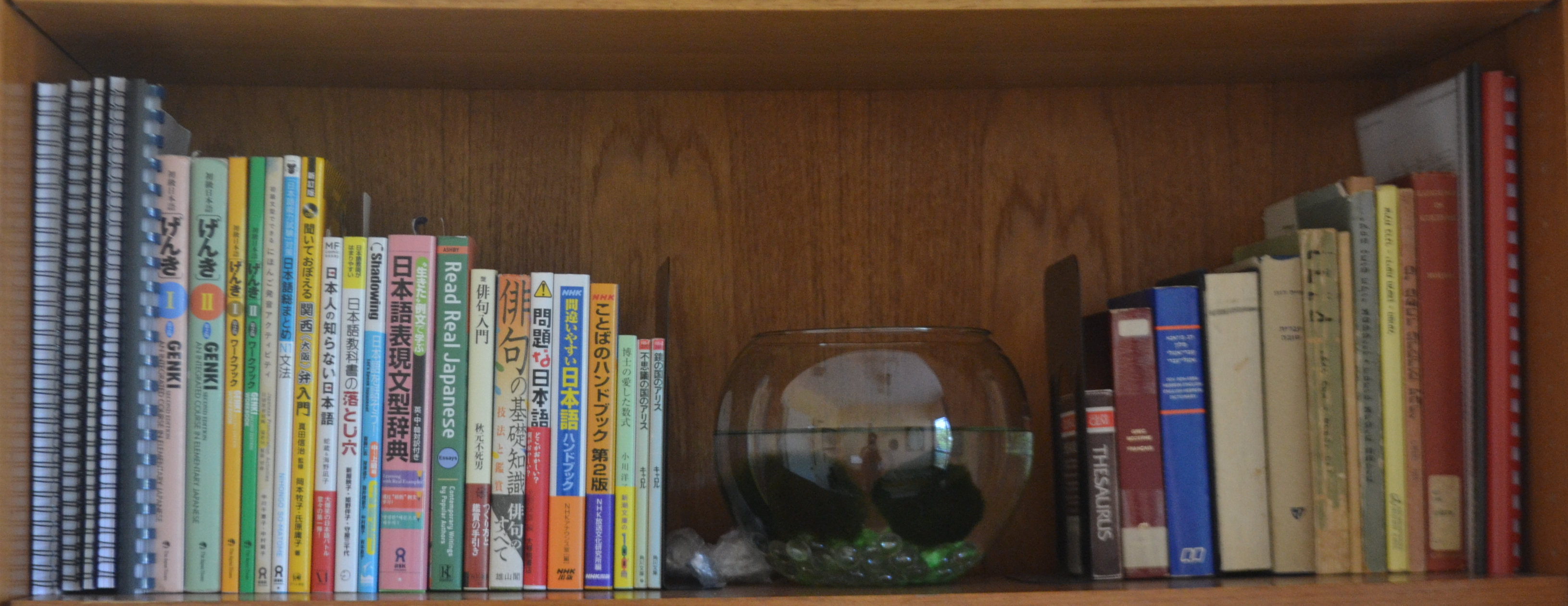Siberian snow cats
They mostly live in the Catland farm owned by Alla Lebedeva (Twitter).
Truly, this is the best of all possible worlds.

We need to talk about ghosts
It’s my view that the existence of ghosts would contravene the second law of thermodynamics. The principle of the conservation of energy, and the fact that entropy always increases; you’d be hard put to throw that away. You’d have to rip the book up — that’s what it would imply if you saw a ghost.
— Brian Cox
Let's rip it.
Ghosts can move physical objects, cause bright lights and loud noises, and interfere with the workings of electrical appliances. All these things require energy. On the other hand, ghosts neither eat nor drink, and being invisible and immaterial do not consume energy from their surroundings. That's the violation of conservation of energy that prof. Cox is referring to. This is a huge obstacle to theoretical physics, indeed, to the extent that none of the models we have makes any sense without it. Nor do, by extension, any of our best attempts at understanding the world we're living in. Thermodynamics is quite literally irreplacable. Reports of ghost sightings aren't.
But there is a silver lining. Even if energy is not really conserved, we still observe it to be conserved in our works and environments. If ghosts provide some means of violating this principle, while this undoes all of theoretical physics, a more practical point of view remains unfazed. They create energy from nothing? Great. Let's have them rotate turbines for us. Or they can generate electric discharges to work electrolytic cells, separating water into hydrogen and oxygen, which can then be used as fuel for electrical generators. It's not like they have anything better to do.
And just like that — clean, renewable energy for free. Why are there no films where poltergeists are used as an energy source?
The law that entropy increases—the Second Law of Thermodynamics—holds, I think, the supreme position among the laws of Nature.
— Sir Arthur Stanley EddingtonFor the second law of thermodynamics, I will burn at the stake.
— Heinz LondonIf someone points out to you that your pet theory of the universe is in disagreement with Maxwell’s equations — then so much the worse for Maxwell's equations. If it is found to be contradicted by observation — well, these experimentalists do bungle things sometimes. But if your theory is found to be against the second law of thermodynamics I can give you no hope; there is nothing for it but to collapse in deepest humiliation.
— Arthur EddingtonEvery question or effect has the right to exist if it does not contradict the second law of thermodynamics.
— Boris Pavlovich
The condradiction with the second law of thermodynamics is subtler, because entropy is a subtler concept than energy. For our purposes, it is enough to note that in particular any decision process results in a net increase of entropy. This includes clear and well-defined processes like running a computer program, but also simpler and more general things like your choice to fold clothes in some particular way and then put them in your closet, rather than leaving them in a pile. The same applies to ghost activity. Ghosts can for example write messages in a layer of dirt on the window, or orchestrate audiovisual spectacles. These all engender an increase in entropy, but since the ghost does not interact with the environment in other ways, this increase must take place within the inner ectoplasmic structure of the ghost itself, gradually reducing its capacity to effect such changes, and eventually causing catastrophic decoherence of the ethereal bonds that support its very existence. As this is observed not to occur, we may assume that ghosts violate the second law of thermodynamics as well.
But this fact can also be exploited to our advantage. Computational work done by computers accounts for a large—and rapidly increasing—part of what drives the global economy. In addition to generating the energy to run these computers, ghosts can help prevent the increase of entropy inherent in this process. The most fundamental way in which computers increase entropy is by converting a directed electric current to heat energy. A ghost can easily sink this heat by creating a cold spot at the CPU.
Imagine: NASA's next Spirit Rover can be powered and operated entirely by spirits!
There are so many other ways that ghosts can be a benefit to society. They do not sleep or get distracted, so they can do security work. They do not interact physically with the environment unless they choose to, and they cannot die again, so they can work safely with hazardous materials. The possibilities are endless.
One more thought about ghosts, although it is unrelated to the discussion above. Why do we tell people who look pale and frightened "you look like you've seen a ghost"? This makes no sense. There is no real reason to be afraid of the discorporated. What have they ever done to you? Consider that ghost activity is the proximate cause of virtually no documented case of fatality or even injury. At the same time, according to official CDC reports, in the US alone an average of over 5 deaths annually have "Exposure to ignition or melting of nightwear" as the underlying cause of death! The phrase really ought to be "you look like you've seen a set of pyjamas".
Happy new apsidal year
Happy new new year, everyone
שנה חדשה חדשה טובה ומוצלחת לכולם
新々年明けましておめでとうございます
Joyeux nouvel nouvel an
Поздравления с новым новым годом
Frohes neues neues Jahr!
Seriously, though
The fact that W. H. Auden wrote both Funeral Blues and Musée des Beaux Arts is an inexplicable mystery.
שפות זרות
אני: אין שפות קשות. יש רק אנשים רכרוכיים.
אני גם כן: ללמוד שפה זרה זה כמו לדחוף אצבע לגרון ולבדוק כמה עמוק אפשר להגיע בלי להקיא.
#אבללמה #משחקתאותהקשהלהמשגה
Vectidraco daisymorrisae
#TIL that Daisy Morris from the Isle of Wight discovered a dinosaur species when she was four, which is now named after her — Vectidraco daisymorrisae. There is also a book about her discovery, called Daisy and the Isle of Wight Dragon.
What have you achieved in your life recently?
Happy 26th anniversary
Just a quick reminder:
The Tale La Belle et la Bête, originally written by Gabrielle-Suzanne Barbot de Villeneuve, was first published in 1740.
On the other hand, as far as we can tell, Time dates back years.
Joyeux 26e anniversaire — un bref rappel
Selon Wikipédia, l'histoire de la Belle et la Bête apparut pour la première fois en France sous la plume de Gabrielle-Suzanne de Villeneuve, en 1740.
Par contre, celui qui est éternel existe forcément au moins aussi longtemps que l'univers, c'est-à-dire années.
Également, aucun des deux n'est rien comme les étoiles, qui sont des sphères de plasma super-chauffées.
26周年記念
まいったな〜。懐かしい歌の様だって本当なので、それが突っ込む所になってない。
יום השנה ה־26
בעצם אין לי מה לומר בעניין.
כלומר, הסיפור הוא משנת 1740. נראה לי שזה כבר נחשב "עתיק יומין".
A passing thought
If the parents of the Sleeping Beauty didn't want her to sleep for a hundred years, instead of trying to destroy every spinning wheel in the land, wouldn't it have been easier and cheaper to place one pea under every mattress?
Scar was framed
I just came back from this moving and eloquent presentation by דורון פישלר נגד העולם.
It is certain that Mufasa, the king of Pride Lands, died in a stampede. With the heir apparent gone, the next in line to ascend the throne was the late king's brother Scar. A few years later, the son Simba mysteriously reappears, and assumes the throne after accusing Scar of regicide and promptly executing him.
Everything else we know only from hearsay.
Can we disentangle the web of narratives surrounding this chain of events? Can we see past the biased reporting and past our own preconceptions? And can we ever know what really happened on that fateful day?
Cheezburger?
לא חדש או אקטואלי או משהו. זה סתם שוכב אצלי במחשב כבר כמה זמן.

Lies, damned lies, and the first day of summer
Don't be fooled by the lies of the establishment!
They would have you think that today is the first day of summer, but that is wrong! This is Midsummer. No matter what they try and tell you, summer has already begun, and is half over.
I didn't even go into the north-centrism in ignoring the fact that the June solstice is winter in the southern hemisphere, because the deception goes deeper than that. We are all being lied to!
Resist! Speak truth to power!
Freedom is the freedom to say that the summer solstice is Midsummer. If that is granted, all else follows.
Happy new new thine!
Easter 2017
Happy Easter to all my Christian friends!
As many of you already know, Easter is the only time of the year when you can balance an egg on God's head.
"Ride on the superstring"
A promotional video for a manga guide to superstring theory.
Let's put it this way
Why are we spending so much money here on Earth, when there are so many problems to solve in space?
Happy new apsidal year
The ontological argument
Here is how I see it: either our universe is absolutely perfect, or it isn't.
If it is not, then it could not have been created by a perfect God, since a God that creates a perfect universe is more perfect than one who does not.
On the other hand, if the world is perfect, than it could not be created by a God at all, since a universe that does not require external explanation is more perfect than a universe that does.
There are only two possible logical conclusions:
- either our universe was not created by a God at all;
- or otherwise God is not perfect, which is blasphemy.
Thanks, René Descartes. Thescartes.
Happy new new year, everyone
שנה חדשה חדשה טובה ומוצלחת לכולם
新々年明けましておめでとうございます
Joyeux nouvel nouvel an
Поздравления с новым новым годом
Frohes neues neues Jahr!
So they say
(or at least John von Neumann does).
![Then again, he also said "If you say why not bomb [the Soviets] tomorrow, I say, why not today? If you say today at five o'clock, I say why not one o'clock?" John von Neumann state machine](images/2016-10-23-state-machine.jpg)
Figure 1: Any one
Skwerl
No matter how many times I watch this.
さっきからこれを考えてきましたが…
日本語の文構造を直接英語に翻訳すれば、ヨーダの様に聞こえるのですね。
Thinking this for a while I have been…
Japanese sentence structure directly into English translate if you will, like Yoda you will sound, hmm?
Just putting it out there
As the greek philosopher Epicurus once said,
Θέλει ο Θεός να εμποδίσει το κακό αλλά δεν είναι ικανός; Τότε δεν είναι παντοδύναμος.
Μπορεί αλλά δε θέλει; Τότε δεν είναι πανάγαθος.
Και θέλει και μπορεί; Τότε γιατί υπάρχει το κακό.
Δεν θέλει ούτε μπορεί; Τότε γιατί να τον αποκαλούμε Θεό.
We know that there are religions in which the gods are not omnipotent, while others have devised both explanations of the necessity of evil as well as denials of its existence. Then there are people who do not believe that gods exist at all.
What seems to be lacking is those religions that take the fourth option. Where are all the people who worship an omnipotent god they know — and openly admit — to be intentionally malicious? There is any number of reasons why such a god is even more worthy of worship than a benevolent one. You all know this is true: we do the same in daily interactions with people. I mean, what wouldn't you do for the privilege to be eaten first?
Cyborgs
A cyborg is a person with artificial body parts, usually electrically powered and often — particulary in popular culture — also externally visible, although heart pacers, for instance, also fall into this category. This is actually a rather permissive interpretation of the original term: indeed, the word cyborg is an abbreviation of "cybernetic organism", and the word cybernetic itself comes from Latin Kibernetus that in turn originated in Ancient Greek κυβεριόν (kyberion), both of which mean "internet". Consequently, strictly speaking, only people whose prostheses process digital information may correctly be referred to as cyborgs. However, the scope of the term has expanded from this strict definition in recent times, and some have even proposed the further inclusion of immobile limb prostheses within it, but such a usage is still uncommon.
As is well-known, The greek mythology is replete with cyborgs, androids and gynoids. Many famous examples come from Hephaestus' work, including Hermes' winged helmet and winged sandals, or the prosthetic shoulder he made for Pelops. Some others are Pygmalion's statue of Galatea, and the bronze golem Talos, created either by Daedalus or by Hephaestus in order to defend Europa (the princess, not the continent) from kidnapping.
Other mythical cyborgs include the Indian warrior-queen Vishpala (date unknown, earliest surviving document ca. 1200BC), who had a prosthetic iron foot (verse 15); and Nuada, king of the Tuatha Dé Danann of Ireland. Nuada lost his arm in battle, but a functioning silver arm was made and fitted for his use. The chronology is not entirely clear, and Nuada might have lived as early as the 20th century, or as late as the 15th century BC.
The earliest known documentation in ancient greece that relates to the internet is Aristotle's criticism on the bloggers of his time, but he makes it clear that the concept was already well-known. Following the conquest of Athens by Alexander the Great at 322BC, progress in the technological and cultural aspects of the internet stifled, and the subject appears to have advanced very little for several centuries, owing at least in part to the booming popularity of the philosophies of Plato and Aristotle, who opposed many elements in the Athenian society, not least among them the democratic system and the information superhighway, which they disparaged as "just a series of tubes": at best a futile endeavor comparable to the steam-actuated trinkets of the time, that wastes the valuable time and energies of intellectuals; at worst a danger to the very stability and morality of society.
Shortly after the fall of Athens, Marcus Sergius, who fought in the Second Punic War (218–201BC) had a prosthetic arm to aid him in combat, and his prowess in battle was remembered for generations, and was recorded by Pliny the Elder nearly three centuries later, in 77AD.
Apart from this outstanding example, however, and following the fall of Athenian Democracy, cyborgs and other manner of fully or partially mechanical people all but disappear from public discourse. For instance, the concept of androids does not reappear until the legend of the Golem of Prague, which was built and programmed in the late 16th century by Rabbi Judah Loew ben Bezalel. And cyborgs resurface only much later, first appearing in such works as "The Modern Prometheus" and more pointedly in the somewhat grim "The Man That Was Used Up", both from the 19th century. From then on, of course, it is a common theme in all the spheres of human inquiry, including literature, medicine and the sciences.
הסנה הבוער
וּמֹשֶׁה, הָיָה רֹעֶה אֶת־צֹאן יִתְרוֹ חֹתְנוֹ—כֹּהֵן מִדְיָן; וַיִּנְהַג אֶת־הַצֹּאן אַחַר הַמִּדְבָּר, וַיָּבֹא אֶל־הַר הָאֱלֹהִים חֹרֵבָה. וַיֵּרָא מַלְאַךְ יְהוָה אֵלָיו, בְּלַבַּת־אֵשׁ—מִתּוֹךְ הַסְּנֶה; וַיַּרְא, וְהִנֵּה הַסְּנֶה בֹּעֵר בָּאֵשׁ, וְהַסְּנֶה, אֵינֶנּוּ אֻכָּל. וַיֹּאמֶר מֹשֶׁה—אָסֻרָה־נָּא וְאֶרְאֶה, אֶת־הַמַּרְאֶה הַגָּדֹל הַזֶּה: מַדּוּעַ, לֹא־יִבְעַר הַסְּנֶה. (שמות ג', א'–ג')
הסנה הבוער, או בשמו המדעי שַׁלְהַבְתּוֹן יָקוּד, נחשב לאחד המינים האנדמיים המרתקים ביותר באזור המזרח התיכון ומרכז אסיה.
כפי שמשה הבחין נכונה (והסופר המקראי החמיץ), השלהבתון עצמו אינו בוער. במקום זאת השלהבתון, המוגן על ידי שכבה בלתי־דליקה, מבעיר גז טבעי עודף. השלהבתון גדל באזורים בהם יש מצבורי נפט, ומסוגל להפיק מהם אנרגיה וחומרי גלם. כמו בקידוחי נפט מלאכותיים, גם בתהליך הזיקוק הטבעי הזה נפלט גז טבעי, שלא בכולו ניתן לעשות שימוש. את העודפים האלה השלהבתון מבעיר באופן מבוקר על מנת למנוע הצטברות של חומרים דליקים העלולים, באקלים החם של הסביבה, להתלקח באופן ספונטני.

בתקופה הקדומה, מספר תרבויות מקומיות התייחסו לצמח כקדוש. הדוגמה הידועה ביותר היא, כמובן, סיפור הסנה הבוער המצוטט לעיל. שילוב של פולחן האש הקיים עם המראה יוצא הדופן של צמח שעולה באש אך אינו נשרף הפך את הצמח למוטיב פופולרי בדתות האזור, בדומה ל־Dictamnus albus, מין נוסף של צמח בוער, שמנגנון הבעירה שלו אחר, ואינו קרוב של השלהבתון. למרבה הצער, השימוש בשלהבתון בטקסים דתיים גרם בהדרגה להיעלמותו ממקומות מיושבים, ובעקבות זאת הצמח כמעט נשכח לחלוטין ונדחק עוד יותר למחוזות האגדה. בתקופתו של משה, השלהבתון כבר היה מחזה נדיר, שניתן למצוא רק באתרים נידחים המרוחקים מישובי אנוש, ורבים מאתרים אלה נעשו למוקדים חשובים של עלייה לרגל, ונותרו חשובים גם לאחר היעלמם של צמחי השלהבתון שגדלו בהם. בתקופה זו במיוחד אין הפתעה בכך שמשה התייחס למציאת פרט שלהבתון, ועוד במקום לא מוכר, כסימן להתגלות אלוהית.
בהקשר המקראי, קיימת גם סברה לפיה עמודי האש והענן — מקורם בשלהבתון: בלילה ניתן לראות בנקל את הלהבה העולה מן הצמח, ובאור היום קל יותר לראות את העשן הנפלט בבעירה. החוקרים הדוגלים בזיהוי הזה שוללים את התפיסה המסורתית לפיה שני העמודים נעו ושימשו מובילי דרך לבני ישראל במדבר, אלא מפרשים את ה״עמודים״ באופן יותר מילולי כמצייני מקום נייחים, ששימשו את משה בתור סימן דרך במהלך יציאת מצרים. סימן אחד מרבים, כמובן, אך בפירוש אחד המרשימים, במיוחד עבור עם שהורכב בעיקר משכבות האוכלוסייה הנמוכות וחסרות ההשכלה של מצרים.
גם בעת המודרנית זכה השלהבתון לתקופה קצרה של תהילה, בעקבות עלייתו של אל חדש: הזהב השחור. נוכחותו של הצמח מעידה על קיומו של שדה נפט תת־קרקעי, שממנו הוא ניזון. מחפשי נפט רבים ניסו לשתול אותו במגוון מקומות, בתקווה שהשתילים ישגשגו בסביבת שדות. למרבה הצער, שדות הנפט נדירים גם באזורנו, ויתר־על־כן השלהבתון הוא צמח קשה לגידול וצומח לאט לפני ששורשיו מגיעים אל מצבור הנפט. נוסף על כך, הזיהום הנגרם מקידוחי הנפט מרעיל את סביבותיהם, ועמן גם את צמחי השלהבתון. כתוצאה מכך, הפרטים האחרונים של המין נעלמו והוא, למיטב ידיעתנו, נכחד לחלוטין.
לעולם לא עוד

השבוע סיימתי לבדוק תרגילים.
לפי הטבלה שלי, עברתי בסמסטר הזה על 1076 מחברות תרגיל. המספר האמיתי שבדקתי נמוך יותר: חלק הוגשו באיחור ולכן לא נדרשתי לבדוק אותן. עדיין, בפירוש בדקתי בסמסטר הזה מעל אלף מחברות. ראיתי שגיאות מכל הסוגים; החל משגיאות החישוב הפשוטות, דרך שגיאות לוגיות (כי אם A גורר B, מובן ש־B בהכרח גורר A), ציטוט לא נכון של משפטים, ותשובה לשאלה שונה מזו שהופיעה בתרגיל, וכלה במלכת השגיאות, "זה אולי נראה כמו משפט בעברית, אבל נראה אם תצליח להבין מה אמרתי והאם זה נכון". ספוילר: אני בסוף מצליח, ולא.
קיבלתי שגיאות שחזרו כמעט אצל כל הסטודנטים, וקיבלתי שגיאות יחידות במינן. קיבלתי שגיאות של אנשים שאמרו במפורש שהם לא בטוחים במה שהם כתבו, ושגיאות שהוצגו בבטחון וגאווה מכמירי לב, או ביוהרה שאינה מכמירת לב כלל. היו לי שגיאות שהוצדקו בטיעון המפורסם "ברור ש־". ראיתי שגיאות שלזמן מה הוליכו אותי שולל, ואפילו היתה שאלה שגם אני טעיתי בפתרון שלה עד שנתקלתי בתשובה הנכונה אצל אחד הסטודנטים. ראיתי שגיאות שנעשו בבלי דעת; שגיאות שנעשו בזדון ובשגגה; שגיאות שנעשו בכחש ובכזב; וגם שגיאות שנעשו באִמוּץ הלב, בעיניים רמות ובעזות מצח. על כולן הערתי, את כולן תיקנתי.
ולמדתי. למדתי לאתר שגיאות במהירות, ולתת הערה תמציתית. למדתי לבדוק רוחבית, ולמדתי למצוא דוגמאות נגדיות. למדתי לכתוב ברווחים הצרים בין שורות צפופות, ובשוליים שהייתי משוכנע שיהיו צרים מלהכיל את ההערה הנפלאה שמצאתי. למדתי לכתוב הערות אישיות בלי לדעת אם אני פונה לגבר או לאשה, ולמדתי איך להסביר לסטודנטים את השגיאות בלי לצעוק עליהם שהם אידיוטים (אני יודע. אני מופתע מזה יותר מכם). למדתי על החשיבות של מתמטיקה לחשיבה בהירה ועל החשיבות של חשיבה בהירה למתמטיקה. למדתי על איך סטודנטים לומדים חומר חדש, ועל כמה בעיות שיכולות לצוץ בתהליך הלמידה. למדתי לאהוב תשובות נכונות (כי אפשר לסמן בהן רק וי) ולשנוא תשובות שגויות (שדורשות ממני לכתוב הרבה). למדתי לשנוא יחד עם הסטודנטים תרגילים ארוכים ומרובי סעיפים.
כנראה הדבר הכי חשוב שלמדתי הוא לא לעשות את זה שוב.
העבודה הזו מילאה לי כל רגע פנוי בסמסטר הזה, וגם כמה מהרגעים האחרים. היא מנעה ממני להקדיש ללימודים שלי את הזמן הראוי להם, ולי את הזמן הראוי לי. נמאס לי להתלונן על העבודה בכל פעם ששואלים אותי מה שלומי, ואני בטוח שגם לשאר האנשים נמאס לשמוע. אני מתכוון לוודא שזו הפעם האחרונה שאני מדבר או כותב על בדיקת התרגילים, לפחות בתור תלונה (אני עדיין שומר את הזכות לדבר על דברים חיוביים, או לפחות משעשעים. או לפחות משעשעים עבורי), ולזכור את כל מה שלמדתי.
לזכור, ולעולם לא לשכוח.
או כל הימים עם הצדפות
מדי פעם נוצר אצלנו עודף מברשות. הן אינן שייכות לאף־אחד, ואנחנו זורקים אותן.
Or All the Seas with Oysters
These toothbrushes just keep showing up. Nobody claims them, so we throw them out. We have no idea where they're coming from.
あるいは牡蠣でいっぱいの海
誰の物でもない、どこから現れたかわからない歯ブラシはたまに積もります。もちろん、捨てるものです。



עצים!
יש בחור בניו־זילנד שבנה כנסייה מעצים חיים. התרגשתי.
Yay trees!
A guy from New-Zealand constructed a church from living trees. How cool is that?
木々だよ!
あるニュージーランドの人は木々で教会を作りました。すごいですよ。
Metrical Feet
This is quite remarkable:
Metrical Feet. Lesson for a Boy
Samuel Taylor ColeridgeTrōchĕe trīps frŏm lōng tŏ shōrt;
From long to long in solemn sort
Slōw Spōndēe stālks; strōng foot! yet ill able
Ēvĕr tŏ cōme ŭp wĭth Dācty̆l's trĭsȳllăblĕ.
Ĭāmbĭcs mārch frŏm shōrt tŏ lōng;—
Wĭth ă leap ănd ă bound thĕ swĭft Ānăpĕsts thrōng;
One syllable long, with one short at each side,
Ămphībrăchy̆s hāstes wĭth ă stātely̆ stride;—
Fīrst ănd lāst bēĭng lōng, mīddlĕ shōrt, Āmphĭmācer
Strīkes hĭs thūndērĭng hoofs līke ă proud hīgh-brĕd rācer.If Derwent be innocent, steady, and wise,
And delight in the things of earth, water, and skies;
Tender warmth at his heart, with these meters to show it,
With sound sense in his brains, may make Derwent a poet,—
May crown him with fame, and must win him the love
Of his father on earth and his father above.
My dear, dear child!
Could you stand upon Skiddaw, you would not from its whole ridge
See a man who so loves you as your fond S. T. Coleridge.
毬藻の愛玩日記
毬藻を買って、これから飼っていくの!

3匹の元気そうな子だ。可愛いでしょ。わ〜い。
ところで、日本人の友だちに問いたいのですが、「愛玩」と「愛育」と「愛護」との違いは何ですか。とりあえず「愛」が必要である事が十分分かっていますけど。
נדנדות
הידד! עשיתי משהו מועיל!
Swings
Hooray! I did something worthwhile!
link
ブランコ
やった!価値がある事をしました!
אוניברסיטת תל־אביב. זה המקום שבו אני רוכש את השכלתי.
An actual sign found in Tel-Aviv University, where I study. It says It is forbidden to hang signs
.
私の勉強しているテルアビブ大学にある看板です。看板を掛けるのは禁止
と書いてあります。

רגע של עברית
הידעת? אפשר להוסיף את המלים "וחמור אבוס בעליו" לכל פתגם, והתוצאה תהיה פתגם טוב יותר.
פתגמים לדוגמה:
- אין חכם כבעל נסיון, וחמור אבוס בעליו.
- אי אפשר לאכול את העוגה ולהשאיר אותה שלמה, וחמור אבוס בעליו.
- צרת רבים — חצי נחמה, וחמור אבוס בעליו.
- ידע שור קונהו, וחמור אבוס בעליו, וחמור אבוס בעליו.
- נזם זהב באף חזיר, וחמור אבוס בעליו.
- אין אלוהים מלבד אללה, וחמור אבוס בעליו.
למרות שהאפקט ידוע מזה שנים רבות, מנגנון הפעולה שלו עודנו בגדר תעלומה. מדענים ברחבי העולם חוקרים את הנושא (וחמור אבוס בעליו).
סירטט
כדי להגדיל את הפירמידה, מוסיפים עוד שכבה.
למטה.
Sirtet
For a larger pyramid, add another layer.
Below.



Take me, NASA!
Some of you are familiar with diamagnetic levitation, and some may not be. This is one of the only methods currently known to cause objects to float without preparing them in advance. For example, it works for water, and for anything containing enough water. This includes living beings.
In 1997, researchers at the Radboud University Nijmegen have first achieved a stable levitation of a living organism—a frog—sustained for 30 minutes.
In September 2009, NASA's Jet Propulsion Laboratory in Pasadena, California, took the next step and levitated mice for several hours. This was done as part of the research concerned with the effects of microgravity on bone and muscle.
Naturally, for truly indicative results, experiments will have to be conducted on human test subjects. For this purpose, the advancement of science, and with no ulterior motive, I would like to humbly propose myself.
I am willing to sign any health waiver necessary. I am willing to pay my own travel expenses. Just give me a vomit bag and a place to stand on above, and I'm there. All you have to do is say the word.
Seriously. For science. Please.
独りぼっちの木
和会話クラスでこの物語を書いたんですぅ〜。
The Lonely Tree
We had a story-writing assignment at Japanese conversation class. Here's a translation of my story.
Your assistance, please
There is somthing that I would like to confess, and which has been preying on my mind for some time now. It is not my custom to cast doubt in this manner on people, without producing any tangible proof, and I wish to assure you that I would not do so now, had I not made candid efforts to verify the facts on my own.
I am referring to the renowned biochemist Dr. Asimov, and in particular to his series of articles about properties of the chemical thiotimoline. I have recently come to believe that he might have fabricated the results he presents in these articles. I know that these are serious allegations (for the benefit of those of you who are not well-acquainted with the scientific publishing process, I should note that falsifying data is a major breach of ethics). Dr. Asimov was a respectable scientist, and has made numerable contributions to various fields of study. What's more, he has passed away, and casting aspersions on deceased people is in poor taste. For these reasons I must stress once more that I have made a genuine effort to locate independent sources reproducing these results. However, while there are several articles listing possible applications, the angle of basic research seems to have been abandoned ever since that first burst of activity.
I pains me to call Dr. Asimov's, or indeed anyone's, integrity into question, but this concern has grown into doubt, and is now threatening to mature into full-fledged suspicion. I have great respect for Dr. Asimov. To me, he has always been a man of science and education. When I wonder what he himself would have suggested on such an occasion, I feel ever more convinced that he would have told me not to hesitate, and to lay open these claims to public scrutiny. It is certainly my hope that you might succeed where I have failed, and locate those elusive publications confirming Dr. Asimov's original findings, thus clearing his name of any suspicion.
And so, I conclude this status with a request, in case these articles do not turn up. All of you biochemists out there, I would like to ask that you pick up the baton. I am nothing of an expert, but it seems to me that the experiment setups described in Dr. Asimov's articles are complete and, for the most part, rather simple. It would be great if you would take the initiative and perform these experiments yourselves, and publish the results in an independent, peer-reviewed journal. You would be doing a great service to the advancement of science, to Dr. Asimov's reputation, and to my own peace of mind.
על צירי לידה והטרגדיה של ההתנצחויות, או: למה כדאי ללמוד על נושא לפני שמביעים עליו דעות מושכלות
אני רוצה להעלות קטע מהתלמוד הבבלי, מסכת בכורות דף מ"ה. לאלה מביניכם שמתעצלים אפילו לחפש בגוגל, אני אצטט (ואפנה למקור):
א"ר יהודה אמר שמואל מעשה בתלמידיו של ר' ישמעאל ששלקו זונה אחת שנתחייבה שריפה למלך בדקו ומצאו בה מאתים וחמשים ושנים אמר להם שמא באשה בדקתם שהוסיף לה הכתוב שני צירים ושני דלתות תניא רבי אלעזר אומר כשם שצירים לבית כך צירים לאשה שנאמר ותכרע ותלד כי נהפכו עליה ציריה רבי יהושע אומר כשם שדלתות לבית כך דלתות לאשה שנאמר כי לא סגר דלתי בטני.
נראה לי די ברור, אבל ליתר בטחון אני אתרגם: שני בחורים ביצעו נתיחה־שלאחר־המות באשה, ספרו ומצאו שיש לה 252 איברים במקום ה־248 (רמ"ח) שהמסורת מדברת עליהם (גם ללא ביסוס עובדתי, אגב). הם פנו לרב שלהם וסיפרו לו. אז ניחש הרב שהנתיחה בוצעה בגופת אשה, והסביר שארבעה האיברים הנוספים הם שתי הדלתות של הרחם, ושני הצירים של הדלתות.
ובכן, מנקודת מבטי נראה ברור שלא רק שהרבנים יהודה, שמואל וישמעאל היו חסרים לחלוטין ידע בסיסי בביולוגיה ואנטומיה, אלא שגם לא ייתכן שאף־אחד מהם אי־פעם ביצע או ראה נתיחה שלאחר המות, וכנראה גם לא שוחח על הנושא מעולם עם אדם שכן ביצע אחת. יתר־על־כן, נראה שהם גם חסרים מידה בריאה של ספקנות.
אין ספק שהמצאה של סיפור כזה דורשת לא מעט תחכום ושנינות, אלא שלמרבה הצער היא גם דורשת שהשנינות הזו תמהל בכמות נכבדת של יוהרה ושל בורות מתנשאת. "אוצר החכמה של היהדות"? יוק.
A rough translation for the those who do not read Hebrew.
Two important details: first, you may not be aware that the Jewish tradition states that the human body contains 248 organs. Also, the Talmud is a collection of Jewish discussions and teachings, touching on all aspects of life, from legal affairs, through moral and philosophical debates, to short anecdotes about matters of historical or natural sciences. It is generally considered a veritable treasure trove of wisdom, showcasing the high levels of intellect, sharp-thinking and debating skills that were highly prized among the Jewish communities.
One of these anecdotes tells the story of two disciples of Rabbi Ishmael. The two were doing an autopsy of a woman, and when they counted all her organs, found that there were 252 — four more than there should be. Asking their Rabbi about this, he immediately guessed that this was a woman's autopsy. According to him, women also have two doors to the womb, and two hinges for the doors.
And I'm left wondering: clearly whoever invented that story lacked any knowledge regarding biology and anatomy. They couldn't possibly have ever performed or attended an actual autopsy, and probably never seriously discussed the matter with anyone who has.
While the person who invented this story was obviously clever, it seems to me that this cleverness is drowned by arrogance and condescending ignorance. It is remarkable, and distressing, to me that anyone of sufficient importance as to have their opinions recorded in the Talmud could also be so irresponsible as to sully its reputation by making up crazy legends that sound unlikely, and can in fact easily be disproven with minimal inspection. A "treasure trove of wisdom", indeed.
The International Date Line — What is it for?
We all know that the Earth is divided into time zones. If you go, at the equator, roughly 1700km westward, you arrive at a place where the time is one hour earlier than at the place you have left. It follows that if you manage to travel that distance in less than one hour, you will reach your destination before you have left.
Admittedly, even if you could instantly travel this distance, you would only gain one hour. But consider that even if you only gain half an hour, or ten minutes, or just three seconds — there is nothing to stop you from doing the exact same thing again. And again. And again.
In fact, if you just keep circling the Earth fast enough, you can travel as far as you like into the past. However, even though the ancient greeks already knew that the Earth was round, and therefore that time zones exist, this possibility of time travel was largely ignored by humanity until recent times. The reason for that is, of course, that horse-driven carriages, automobiles, ships and even airplanes in their early days were simply not fast enough to overtake the sun, and thus to achieve effective time travel. Nevertheless, some visionary storywriters did, in fact, refer to this possibility, with the most famous example being, perhaps, Jules Verne's "Around the world in eighty days", though there the protagonist can only manage to slow time down, rather than reverse it, due to the limitations of contemporary vehicles. Another well-known example is the scene from the first Superman movie, where Superman uses this method to travel backwards in time and rescue Lois Lane.

In order to traverse a time zone in less than one hour, one must travel at above 1.3 times the speed of sound, and therefore time travel was impossible until the sound barrier was broken. In fact, one of the reasons that were given at the time as demonstration that the speed of sound cannot be surpassed was that you don't see any tourists from the future going around in the streets. When the sound barrier was eventually broken, the nonexistence of these time-tourists became a serious philosophical problem, and many explanations were proposed, such as that supersonic speeds cannot be maintained long enough for an appreciable amount of time travel to be achieved, or that all the tourists manage to camouflage themselves well enough so as not to be noticed.
Meanwhile, some more pressing concernes were raised. For instance, the imminent problem of time criminals, who would travel to the past, and using superior technology would commit robberies of priceless ancient artifacts. All these questions and problems were eventually solved in full, when the UN introduced the International Date Line. When one passes a time zone by crossing this line, one does not arrive to the previous hour of the same day, but rather to that of tomorrow. This effectively limits the duration of time travel (to the excess future as well) to no more than 24 hours.
The location of the IDL was chosen to be opposite to the Greenwich meridian, where time is manufactured. This location was selected in order to allow the time flowing outward from Greenwich to reach the ends of the Earth at roughly the same time, as it goes both eastwards and westwards. Of course, since the Earth itself rotates due east, the time flows faster, kilometer for kilometer, going eastwards than it does going westwards, so the IDL should have been located, ideally, some distance to the east compared with the place where it has been put. However, here what you might call politics of convenience enter the game. It was already the case that time zones were twisted around several countries, so as to remain in international waters and prevent foreign governments from controlling the passage of time. Compared with these liberties taken with physics, a couple of dozens or hundreds of kilometers this way or that in the middle of the Pacific ocean were considered a minor issue, and ignored.
This is why stuff like what Phileas Fogg or Superman did are no longer possible. This is why we are not flooded by tourists, colonists, or conquerors from the future, and this is why nobody comes to assassinate Justin Bieber.
And now you know.
Programmable quantum computer
Good news, everyone!
Apparently (), a quantum computer will soon be connected to the internet, and will be offered to the general public for experimentation, for free.
The two qubit computer (no qupun intended) will be launched on the 20th of this month. To actually use it, you must first register and ask for permission, but otherwise there seem to be no costs attached.
Tartelettes
After Pi day, what do you do with the leftover dough?
Chocolate tartelettes, naturally.

